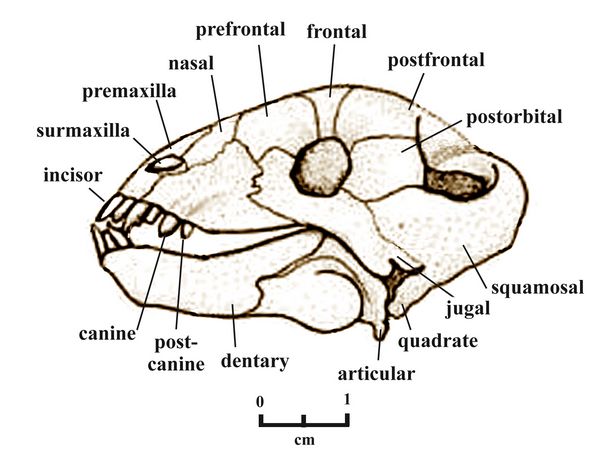Athena Review Image Archive ™
Tapinocaninus pamelae skull

Tapinocaninus pamelae (after Rubridge 1991).
Tapinocaninus was a large therapsid from the Middle Permian, Eodicynodon Zone in the Beaumont Group of the Karoo Valley in South Africa. This Assemblage Zone dates from the Wordian stage (268.8-265.9 mya), and is named for the small herbivore Eodicynodon ("dawn double dog-tooth"), the earliest known genus of dicynodont (Rubridge, King, and Hanson 1994).
Only one species of Tapinocaninus is known, T. pamelae
(meaning "Pam's humble canine"), with the genus named for
its small canine teeth, and the species named in honour of the
discoverer Bruce Rubidge's mother. Four specimen are known, with the holotype (NMQR 2987) and three paratypes each represented by skulls and mandible bones.
T. Pamelae was a large, heavy therapsid in the suborder Dinocephalia ("terrible head"), and the family Tapinocephalidae ("humble head"), of which it is the most basal member. It grew up to three meters (120 in) long, weighing up to 1,000 kg (2,200 lb). It has a heterodont (mixed tooth type) dentition consisting of incisors, canines, and postcanines. Its relatively small canine teeth lack a definite crushing heel. The maxillary and premaxillary dentition is only partially preserved. It is assumed to be either an herbivore or an omnivore.
Reference:
Rubidge, B.S. 1991, A new primitive dinocephalian mammal-like reptile from the Permian of southern Africa. Palaeontology. 34: 547–559.
.Copyright © 1996-2020 Rust Family Foundation (All Rights Reserved).